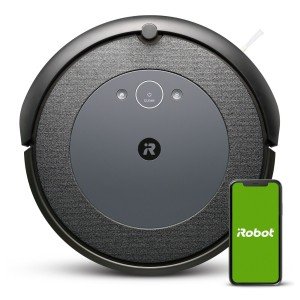The Rise of the Automated Vacuum: A Comprehensive Overview
As technology continues to evolve, so too does the way we approach everyday tasks, including cleaning our homes. The arrival of automated vacuums, commonly called robotic vacuums, has changed the landscape of home chores, providing a level of convenience formerly unimaginable. This short article delves deep into the features, benefits, difficulties, and future of automated vacuums, illuminating why they are becoming a staple in modern families.
What is an Automated Vacuum?
Automated vacuums are self-operating gadgets designed to clean floors while requiring very little human intervention. Geared up with sensing Our Web Page , they browse spaces, avoid challenges, and return to their charging stations when short on battery. Numerous designs even use programmability via smartphone apps, permitting users to set cleaning schedules or manage the vacuum remotely.
Secret Features of Automated Vacuums
| Feature | Description |
|---|---|
| Navigation | Uses sensing units and cameras to map out areas, enabling systematic cleaning paths. |
| Programmable Cleaning | Users can set up cleansings via mobile apps or pre-set timers on the gadget. |
| Smart Home Integration | Compatibility with smart home systems (e.g., Alexa, Google Home) for voice control. |
| Dirt Detection | Advanced models can determine locations with more dirt and focus on them for deeper cleaning. |
| Recharge Dock | Automatically returns to its charging station when battery levels are low. |
| Several Surface Cleaning | Can transition seamlessly between various floor types, including carpet, tile, and hardwood. |
Advantages of Automated Vacuums
- Time-Saving: Automated vacuums can considerably minimize the time invested in home chores, enabling users to allocate their time to more pleasurable activities.
- Consistency: These devices provide a constant cleaning schedule, making sure that dirt and dust do not have a chance to build up.
- Ease of access: Individuals with movement obstacles may find automated vacuums particularly helpful, as they eliminate the physical needs of vacuuming.
- Technological Innovation: Many designs come with sophisticated functions such as app control, which makes it possible for users to monitor and control their vacuum from essentially anywhere.
- Energy Efficient: Most robotic vacuums are developed to run efficiently, making use of less energy than standard vacuum cleaners.
Drawbacks to Consider
While the benefits of automated vacuums are various, there are also some possible drawbacks:
- Cost: While prices have become more competitive, high-end models can still be a considerable financial investment.
- Minimal Suction Power: Robotic vacuums may not offer the very same effective suction as standard designs, particularly on high-pile carpets.
- Upkeep Needs: Users must regularly clean up brushes and filters to maintain optimum efficiency.
- Size Restrictions: Some students may struggle to navigate tight spaces or high furnishings, resulting in areas that remain uncleaned.
Popular Brands and Models
When investing in an automated vacuum, it's vital to pick a trustworthy brand name that fits private cleaning needs. Here are some widely-regarded choices in the market:
| Brand | Design | Secret Features |
|---|---|---|
| iRobot | Roomba i7+ | Self-emptying base, advanced smart mapping, Alexa suitable. |
| Ecovacs | Deebot Ozmo T8 | Integrated mopping function, outstanding navigation, and smart home compatibility. |
| Roborock | Roborock S7 | Strong suction power, sonic mopping, multi-floor mapping. |
| Neato Robotics | Neato D7 | D-shape design for corners, LaserSmart mapping technology. |
Future of Automated Vacuums
The trajectory for automated vacuums points towards greater elegance and integration with smart home innovations. As artificial intelligence (AI) ends up being more embedded in family gadgets, future models are expected to leverage maker finding out to boost their cleaning effectiveness and navigational capabilities.
Possible improvements consist of:
- Enhanced AI Learning: Improved algorithms enabling vacuums to discover user routines and adjust their cleaning schedules accordingly.
- Enhanced Navigation: Continued advancement of LiDAR and electronic camera systems for better barrier avoidance and mapping.
- Multifunctionality: The introduction of vacuums that can not just tidy floors however also tackle cleaning and other family chores.
Regularly Asked Questions (FAQs)
Q1: Can automated vacuums clean carpets successfully?
A1: Many contemporary automated vacuums feature strong suction abilities and specialty brushes produced for carpet cleaning. Nevertheless, deep cleaning high-pile carpets might still need standard vacuuming techniques.
Q2: How long do automated vacuums generally run on a single charge?
A2: The runtime can vary by design, but a lot of robotic vacuums can run in between 60 to 120 minutes before needing a recharge. More advanced models may have longer runtimes.
Q3: Are automated vacuums suitable for homes with pets?
A3: Yes, many automated vacuums are developed with pet owners in mind. They frequently include more powerful suction and tangle-free brushes that can pick up pet hair efficiently.
Q4: How often should I run my automated vacuum?
A4: This largely depends upon the foot traffic in your home and personal preference, however lots of users discover running it everyday or every other day keeps their floorings tidy.
Q5: Can I by hand manage my automated vacuum?
A5: Yes, a lot of automated vacuums include manual control choices via remote or mobile apps, allowing users to direct the vacuum to specific areas.
Automated vacuums represent the intersection of technology and benefit, substantially simplifying family cleaning jobs. While they might have restrictions, their advantages often outweigh the downsides, making them a valuable addition to modern-day homes. As innovation continues to advance, we can anticipate these gadgets to progress further, boosting their utility and efficiency. For anyone seeking a more efficient cleaning routine, an automated vacuum may simply be the option.

